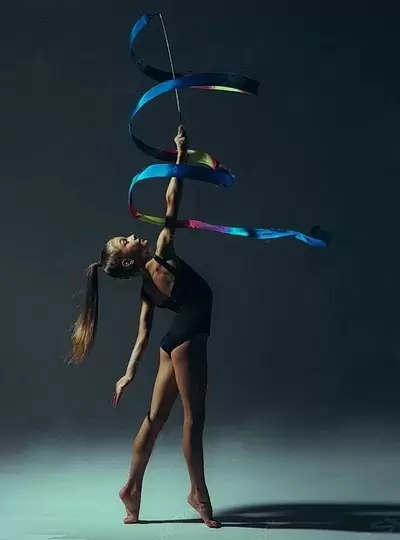Rhythmic gymnastics, a sport celebrated for its elegance and artistry, has seen significant changes in its apparel over the decades. From simple beginnings to the sparkling, technologically advanced garments of today, rhythmic gymnastics leotards have evolved alongside the sport itself, reflecting changes in societal fashion trends, advancements in fabric technology, and the increasing athletic demands of the discipline. This article explores the progression of rhythmic gymnastics apparel, tracing its development from the mid-20th century to the present day.
1960s to 1970s: Modest Beginnings
In the early years of rhythmic gymnastics, which became an officially recognized sport by the International Gymnastics Federation in 1963, apparel was modest and functional. The leotards worn by gymnasts were often made from cotton or simple polyester blends, offering limited flexibility and comfort. Designs were typically solid colors with very little embellishment, prioritizing modesty and simplicity over aesthetics.
1980s: Introducing Bright Colors and Elastic Fabrics
As the sport gained popularity through the 1980s, leotards began to incorporate brighter colors and more elastic fabrics, like spandex. This shift was partly influenced by the broader fashion trends of the decade, which favored vibrant colors and bold patterns. The new materials allowed for greater range of motion, enabling more complex and challenging routines.
1990s: The Rise of Aesthetics
The 1990s marked a significant turning point, with a greater emphasis placed on the aesthetic appeal of the leotard. This was driven by the realization that the presentation could influence judges’ perceptions and scores. Leotards became more elaborate, featuring combinations of different fabrics such as velvet and Lycra. Gymnasts started to wear designs that included sequins, sparkles, and even thematic elements that matched their music and routine choreography.
2000s: Technological Advancements
Entering the new millennium, the focus shifted towards technological advancements in fabric. Manufacturers began using microfibers that enhanced performance by managing moisture, reducing drag, and increasing comfort. These fabrics also allowed for more dynamic designs with intricate patterns and extensive use of decorations like crystals and metallic threads, all aimed at enhancing the visual impact during performances.
2010s to Present: Customization and Personalization
Today, rhythmic gymnastics leotards are at the height of customization and personalization. With advancements in technology, each leotard can be tailor-made to fit a gymnast’s specific measurements. Modern leotards are often designed using 3D modeling software, which allows designers to see how the leotard will look and function as the athlete moves. Current leotards also feature an impressive array of decorations, from hand-sewn crystals to laser-cut accents, which reflect not only the music and choreography of the routine but also the gymnast’s personal style.





